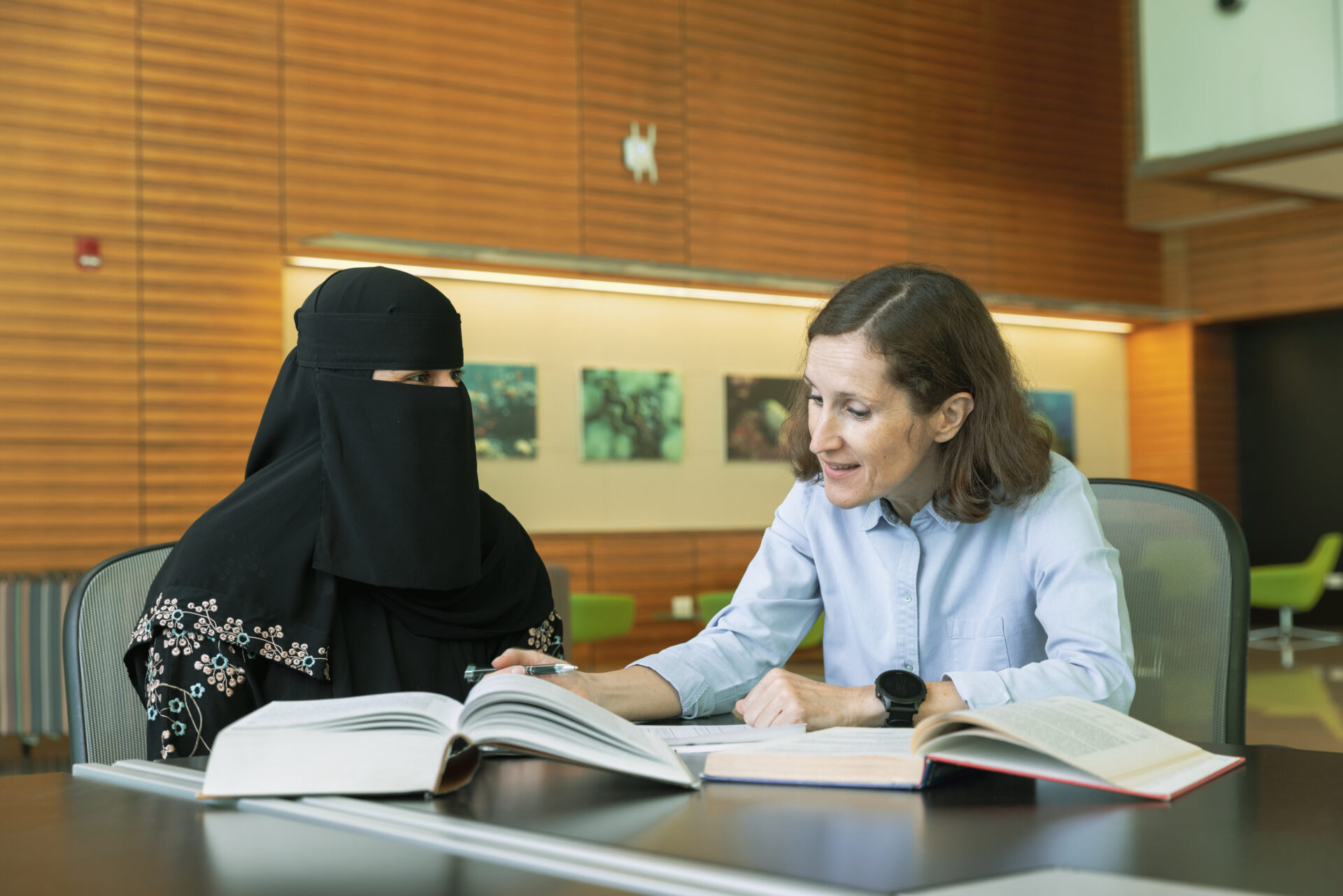The two met in 2020 at a KAUST workshop for Women in Science and Engineering and discovered a shared interest in nanocrystals, explains Lacoste. “On my side, for their production by plasma, and on Amal’s side, for their photonic properties,” she says.
With support from KAUST’s Centre Competitive Funding (CCF), they began a one-year project that aims to produce silicon-carbide (SiC) nanocrystals for photonic applications, such as LEDs or photovoltaic systems used in solar power. “The project aims to produce an accessible and inexpensive method, with little chemical waste, that any low or medium-sized enterprise could afford,” explains Lacoste.
“With my student Roman Zamchii, I am producing different SiC nanoparticles using various plasma techniques,” explains Lacoste. “Professor Alamri and her student Wesal Madani are characterizing them and providing feedback about their potential for photonic applications.”
The initial idea to use SiC nanocrystals was sparked by Donal Bradley, Vice President of Research, who was seeking a local source of tiny (less than 10 nm) nanocrystals for use in LEDs. “Once we have reached a high selectivity and good yield, we will pass these results to Professor Bradley to determine their potential for LED applications,” says Lacoste.
The collaboration is going well. “The group at KAU have really complementary skills as well as different ways of working. They are material scientists, and we are mechanical and electrical engineers,” says Lacoste. “It’s really interesting to combine our strengths to create a high-tech product for use in a large range of applications. I am also very excited to work with young female scientists from Saudi Arabia and contribute to professional development in the Kingdom,” she says.
Alamri agrees. “This collaboration with Professor Lacoste highlights for me a sustainable way to engage with KAUST throughout my research career. As an assistant professor at KAU, this collaboration expands the diversity of my networks and supports me to better interact with the international research community.

